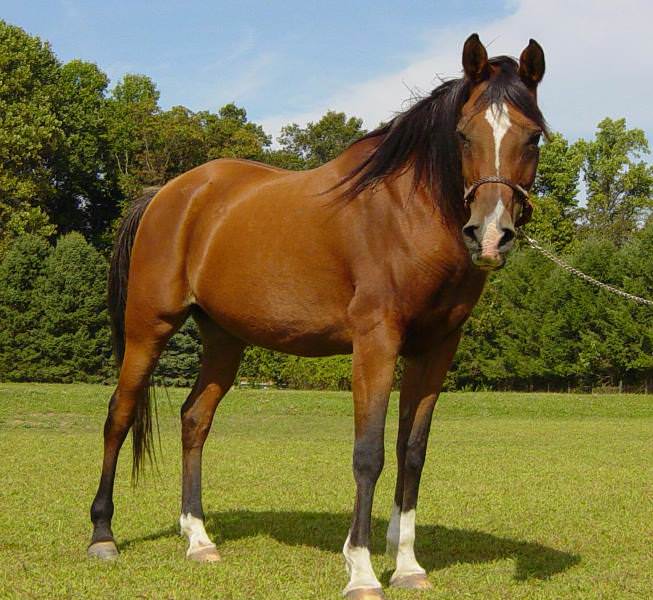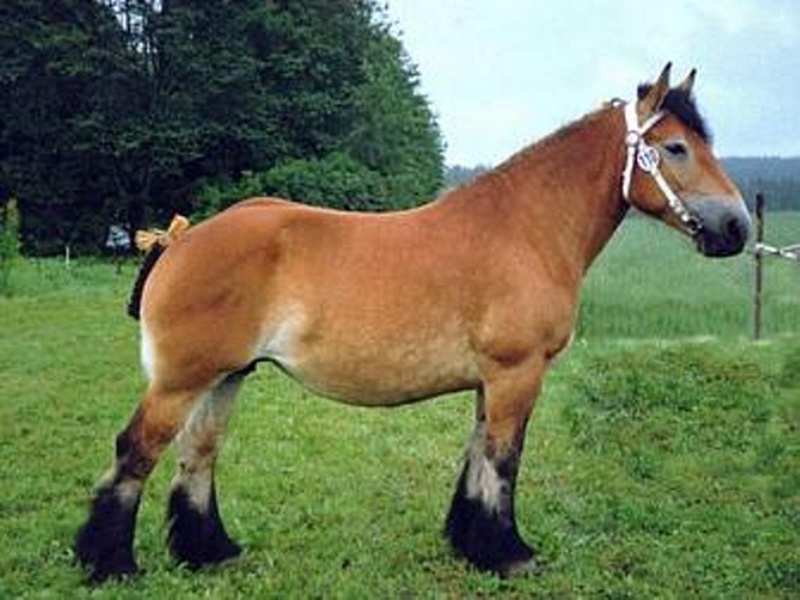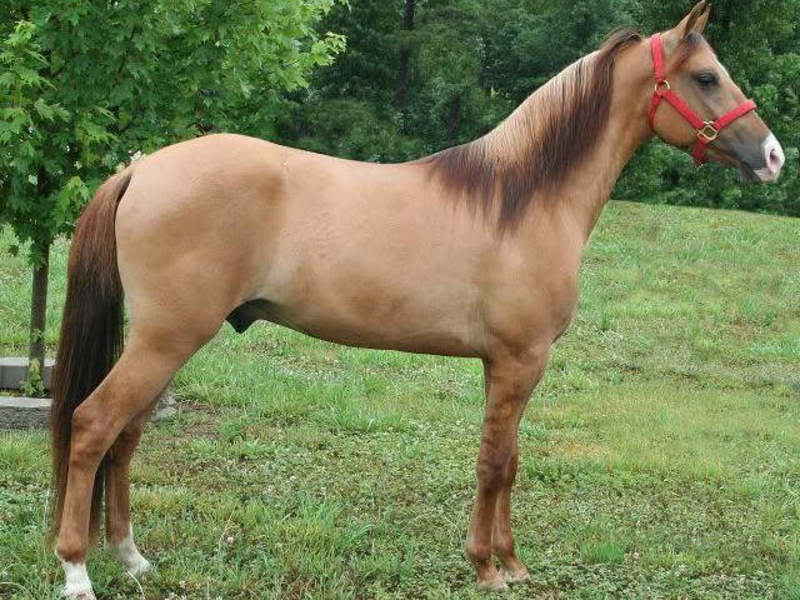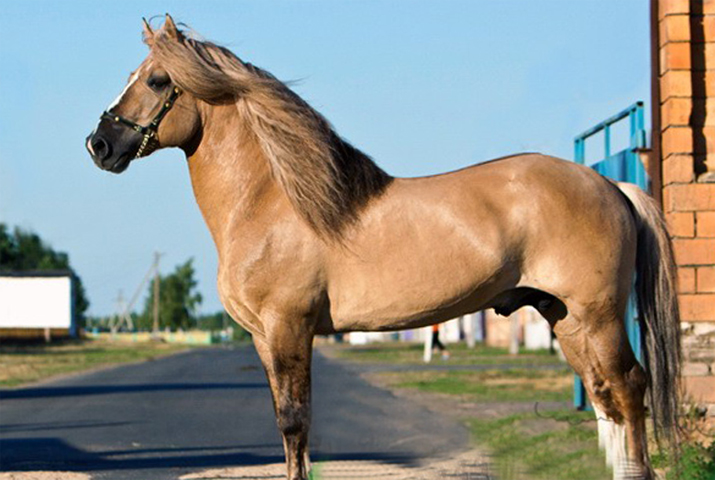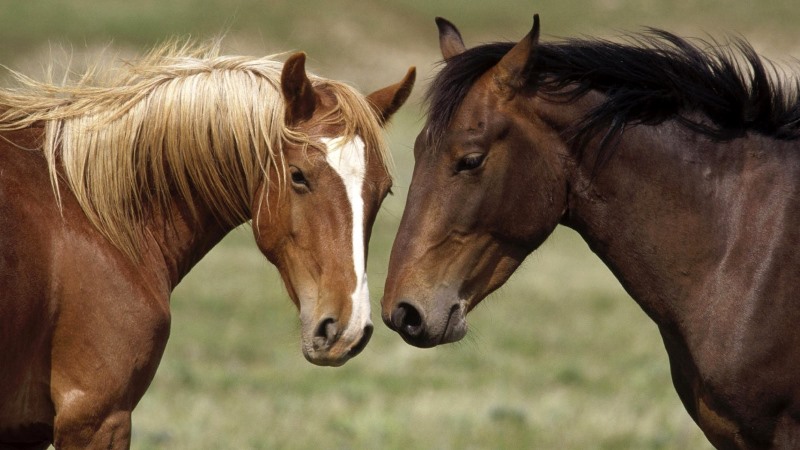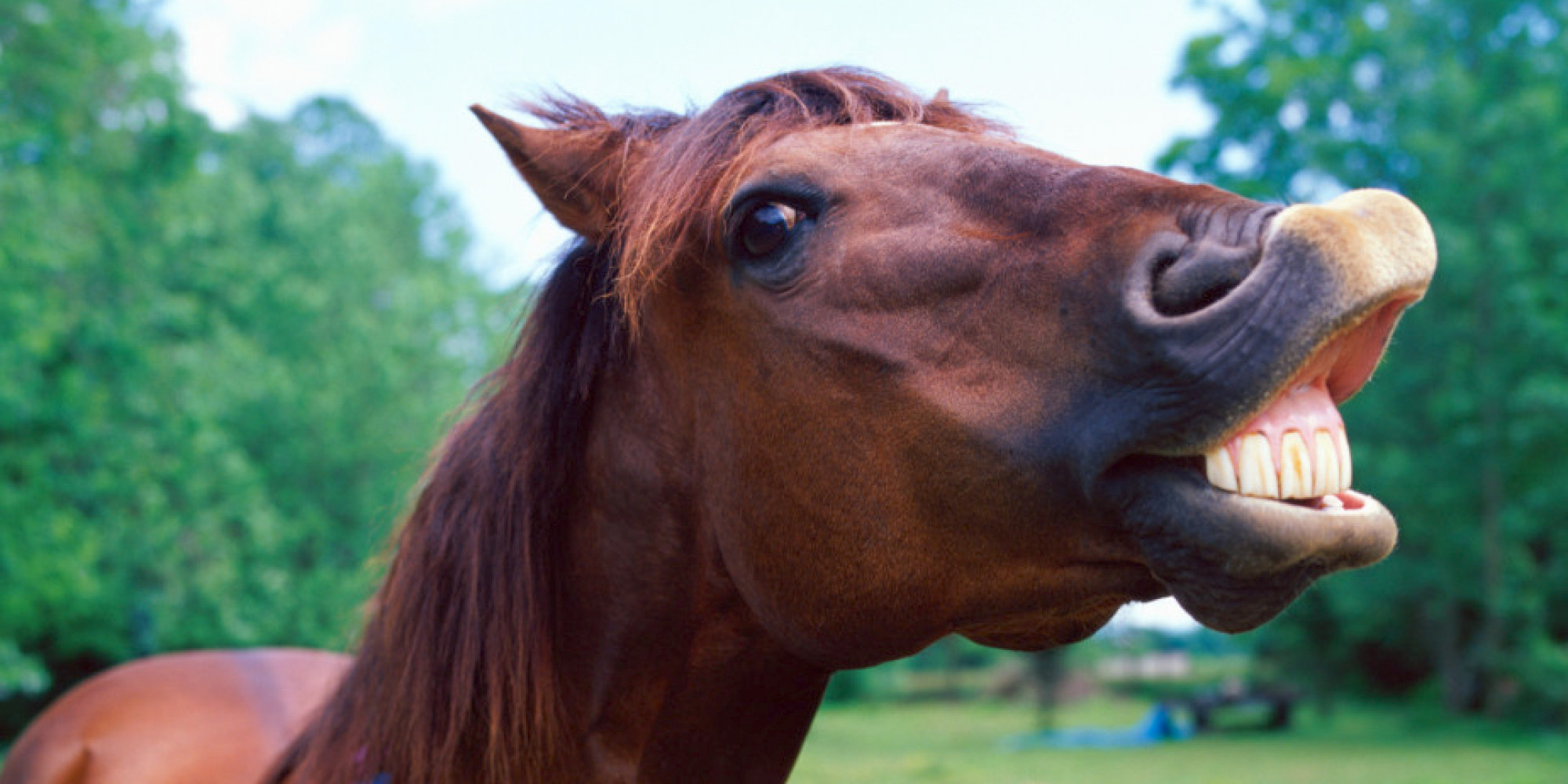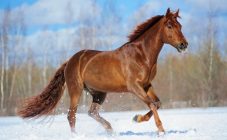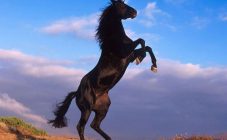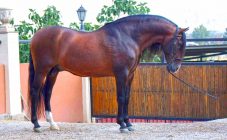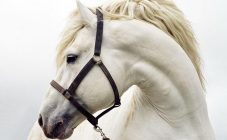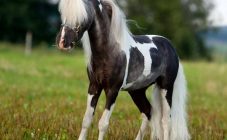Content:
Color is the main feature by which horse varieties differ. It is impossible to single out the complete classification of a particular individual without a precise definition of this parameter. To do this, you need to visually analyze the coat color, eye color and skin tone. The presence of age spots, darkened or lightened fragments, and coat shades should also be considered. Belonging to a suit is primarily a hereditary indicator. The article describes what a brown horse suit is.
Description of the kauro suit and its characteristics
The color of the horse's coat in question is quite rare. It is possessed by zonal or wild species. Such an unusual shade was inherited by horses from ancient ancestors. The DUN gene provides brown coloration. This indicator is also called the wild color genome. Individuals possessing them are considered the most ancient, having a "wild color". Many novice livestock breeders and horse lovers do not know a brown horse - what color is it. The base color of DUN is a red hue. In addition, this gene has a lightening effect by modifying the black and red pigmentation of the coat, without lightening them entirely. The lightening effect does not apply to the mane, tail and hind legs.
The tonality of the hairline is achieved by mixing hairs of different shades. Zonal suits are distinguished by an uneven color of the body with the presence of enlightenment near the eyes and on the throat. The color of the head and neck parts is darker. The lower limbs are black or darker than the main one. Markings are possible in wild varieties. One of the main distinguishing features of hereditary origin from related tarpans is the presence of dark transverse stripes, which are located near the hocks and provide a "zebra" color.
Another distinguishing feature is the presence of a dark brown stripe near the backbone and darkening in the area of the shoulder blades. The presence of all the above signs unite the varieties of zonal suits into a single one - savras. These horses are divided into dun-gray-haired, bay-gray-haired, black-gray-haired and reddish-gray (brown) suits.
Cowray horse - what color
The color of the body can be described as faded or pale red. In comparison with the main shade of the hind legs, it is more saturated. The composition of the mane and tail includes a cross between dark brown, auburn and light strands, which makes them the most colorful elements of the hairline.Markings are reddish brownish or auburn color.
The shade of horizontally located stripes, which are located near the hock joints, is brown.
The brown suit is divided into a number of varieties, due to the difference in shades of wool:
- Individuals of the dark brown color are notable for the dark red color of the body. Part of the head and lower limbs has a darker shade. The strip located next to the ridge is chocolate-colored. The mane and tail part includes auburn with dark brown strands. These are the most colorful fragments of the hairline. The color of zebra and little noticeable spots on the scapula is brownish.
- Horses of a brown suit are notable for a light red color of the body with a red head color and an auburn shade of the mane and tail. The color of the belt and hock joint is reddish-brown.
- The light brown suit is characterized by a lightening of the body with a darker head. Both red and blonde hair are part of the mane and tail, which makes these parts of the body look darker than the rest. The colors of the zebra pattern, the belt and dark fragments of the light brown suit are reddish.
This type of horse can only rarely be seen at exhibition forums or hippodrome competitions. This variety is most widely used in the rural industry.
What does a brown suit look like?
On average, brown horses can live a little less than 30 years. Height and weight are specific to the breed. In addition, maintaining proper care and providing adequate feed will also affect size. With quality maintenance, the horse has larger parameters. The average height of a brown horse is 180 cm from the withers.
A brown horse can weigh from 500 to 1000 kg. An animal of the Altai breed, for example, grows less than 1.5 m and weighs 500 kg. Soviet heavy draft brown horses grow up to 200 cm and weigh just under 1000 kg.
Diet requirements
When purchasing a horse, it should be remembered that this equid belongs to the herd type of animals. This means that the horse does not tolerate being alone and needs its own kind. The kaurai suit is no exception. Since not all breeders have the opportunity to buy or maintain a herd of horses, you can create the necessary company for an animal by taking several sheep (goats are also suitable for joint breeding).
Horses are herbivores that feed on hay or oats. However, if necessary, straw can be used instead of oats. In summer, equids are released into pasture, where, depending on the age of a particular animal, it can consume up to 100 kg of grass. In winter, more food should be included in the daily diet for better keeping warm. The exact amount of feed also depends on the particular horse. However, like all other representatives of the animal world, horses need water, the volume of consumption of which per individual is 65 liters.
How to properly care for brown horses
An important condition when caring for an animal is the ability to engage in physical activity. Since horses spend most of their time in the pasture in the summer season, they walk themselves. However, in winter, when the animal is mostly in the stall, it should be taken out for a run for 4 hours a day.You also need to brush your horse. Being in natural conditions, the horse is able to cleanse itself by rolling on the ground. At home, the odd-hoofed should wash the entire body, inspect the hooves twice a day, regardless of where the horse is kept, from the time of year and the amount of physical activity.
Since the mane has an important effect on the well-being of the horse, it must be kept healthy. Its main function is to protect the neck and head.
In what breeds can this variety be found
Today it is not always possible to meet an individual with a brown coat color. Within Russia, such individuals live among the Altai breed species living in the mountains. Also, brown horses of the Kazakh breed, which are common in Kazakhstan, are also found on the territory of Yakutia. Occasionally they can be distinguished among the Soviet heavy draft species.
On the territory of the American continent, brown horses can be found among Mustangs and Criollos. In Europe, specimens of the Norwegian fjord breed have such a shade. In Ireland, the representative of this color is the Icelandic pony.
The kauray color is “wild”, characterized by an uneven specific color of red shades, which is transmitted to modern animals from their very distant ancestors living in the wild. She is spectacular and unforgettable. Horses of this color are the highlight of any show.
